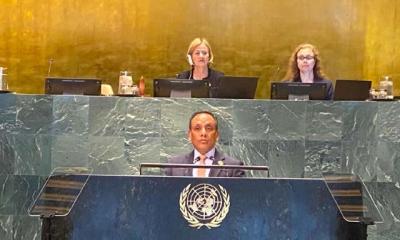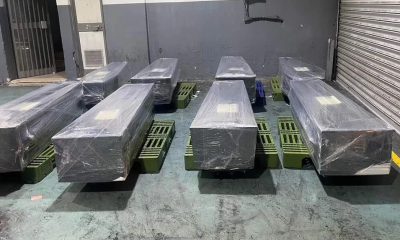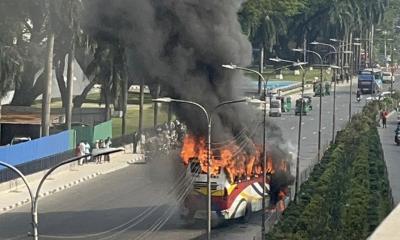To the naked eye, the Mako Compressor Station outside the dusty West Texas crossroads of Lenorah appears unremarkable, similar to tens of thousands of oil and gas operations scattered throughout the oil-rich Permian Basin.
What’s not visible through the chain-link fence is the plume of invisible gas, primarily methane, billowing from the gleaming white storage tanks up into the cloudless blue sky.
The Mako station, owned by a subsidiary of West Texas Gas Inc., was observed releasing an estimated 870 kilograms of methane – an extraordinarily potent greenhouse gas — into the atmosphere each hour. That’s the equivalent impact on the climate of burning seven tanker trucks full of gasoline every day.
But Mako’s outsized emissions aren’t illegal, or even regulated. And it was only one of 533 methane “super emitters” detected during a 2021 aerial survey of the Permian conducted by Carbon Mapper, a partnership of university researchers and NASA’s Jet Propulsion Laboratory.
The group documented massive amounts of methane venting into the atmosphere from oil and gas operations across the Permian, a 250-mile-wide bone-dry expanse along the Texas-New Mexico border that a billion years ago was the bottom of a shallow sea. Hundreds of those sites were seen spewing the gas over and over again. Ongoing leaks, gushers, going unfixed.
“We see the same sites active from year to year. It’s not just month to month or season to season,” said Riley Duren, a research scientist at the University of Arizona who leads Carbon Mapper.
Carbon Mapper identified the spewing sites only by their GPS coordinates. The Associated Press took the coordinates of the 533 “super-emitting” sites and cross-referenced them with state drilling permits, air quality permits, pipeline maps, land records and other public documents to piece together the corporations most likely responsible.
Just 10 companies owned at least 164 of those sites, according to an AP analysis of Carbon Mapper’s data. West Texas Gas owned 11.
The methane released by these companies will be disrupting the climate for decades, contributing to more heat waves, hurricanes, wildfires and floods. There’s now nearly three times as much methane in the air than there was before industrial times. The year 2021 saw the worst single increase ever.
Methane’s earth-warming power is some 83 times stronger over 20 years than the carbon dioxide that comes from car tailpipes and power plant smokestacks. Congress and the Environmental Protection Agency have largely failed to regulate the invisible gas. That leaves it up to oil and gas producers — in some cases the very companies who have been fighting regulations — to cut methane emissions on their own.
“Methane is a super pollutant,” said Kassie Siegel, director of the Climate Law Institute at the Center for Biological Diversity, an environmental group. “If carbon dioxide is the fossil-fuel broiler of our heating planet, methane is a blowtorch.”
PERSISTENT, NOT JUST INTERMITTENT EMISSIONS
Methane emissions are notoriously hard to track because they are intermittent. An old well may be wafting methane one day, but not the next.
But last October, AP journalists visited more than two dozen sites flagged as persistent methane super emitters by Carbon Mapper with a FLIR infrared camera and recorded video of large plumes of hydrocarbon gas containing methane escaping from pipeline compressors, tank batteries, flare stacks and other production infrastructure. The Carbon Mapper data and the AP’s camera work show many of the worst emitters are steadily charging the Earth’s atmosphere with this extra gas.
In addition to West Texas Gas’s Mako site, AP observed a large plume of gas escaping from tanks at a WTG compressor station about 15 miles away in the Sale Ranch oil field. Carbon Mapper estimated that emissions from that site averaged about 410 kilos of methane an hour.
AP found Targa Resources, a Houston-based natural gas storage, processing and distribution company, was the closest operator to 30 sites that were emitting a combined 3,000 kilograms of methane per hour, with plumes escaping from pipelines, wells, tanks and compressor stations across the company’s sprawling Texas footprint.
Targa did not respond to a detailed list of questions from the AP.
Another 21 super-emitting sources were detected at facilities owned by Navitas Midstream, a pipeline company based north of Houston, that has since been sold to Enterprise Products Partners. Equipment belonging to Navitas was estimated to be releasing a combined 3,525 kilos of methane an hour.
WASTING A MARKETABLE PRODUCT
One of the unusual things about this kind of climate pollution is that operators are wasting the very product they are working to extract. Methane gas is not a waste product; it is the target gas that operators drill for, process and sell all over the world.
But fracking has unlocked such massive amounts of natural gas from the Permian’s shale deposits that the basin’s ever-expanding web of pipelines don’t have enough capacity to gather and transport it all. As a result, natural gas is still routinely burned off even as billions have been invested into new terminals along the Gulf Coast to ship the glut of American gas to overseas markets.
Still, companies say they’re doing better.
Houston-based Enterprise Products, which owns the former Navitas assets, said it was cracking down. “We are in the process of integrating the acquired assets and are committed to ensuring they are operated safely and responsibly,” said spokesman Rick Rainey.
He did not answer specific questions about what the company would do to reduce methane emissions.
In a statement, Midland-based West Texas Gas said it routinely conducts its own overflights with gas detection equipment and within the last six months had either “repaired or upgraded” nine of the super emitting sites that AP asked about, including Mako. The company was “actively addressing” another site, though it declined to provide specifics about what improvements were made and when. WTG said it inspected the last site and found no leak.
“West Texas Gas is deeply committed to environmental stewardship and continuously strengthens company processes and procedures to ensure we operate in a manner that is consistent with that commitment,” the statement said.
YEARS OF INACTION
In May 2016, President Barack Obama announced a Climate Action Plan that included new federal rules requiring the oil and gas sector to slash methane emissions by 40 percent by 2025.
But President Donald Trump, who derided climate change as a Chinese-perpetrated hoax, scrapped those policies before they took effect.
Trump’s climate denial and die-hard support for fossil fuels attracted campaign contributions from the industry. It also won him widespread support in the Permian’s Republican-dominated cities and towns, where pumping oil and gas is considered both lifeblood and birthright.




































